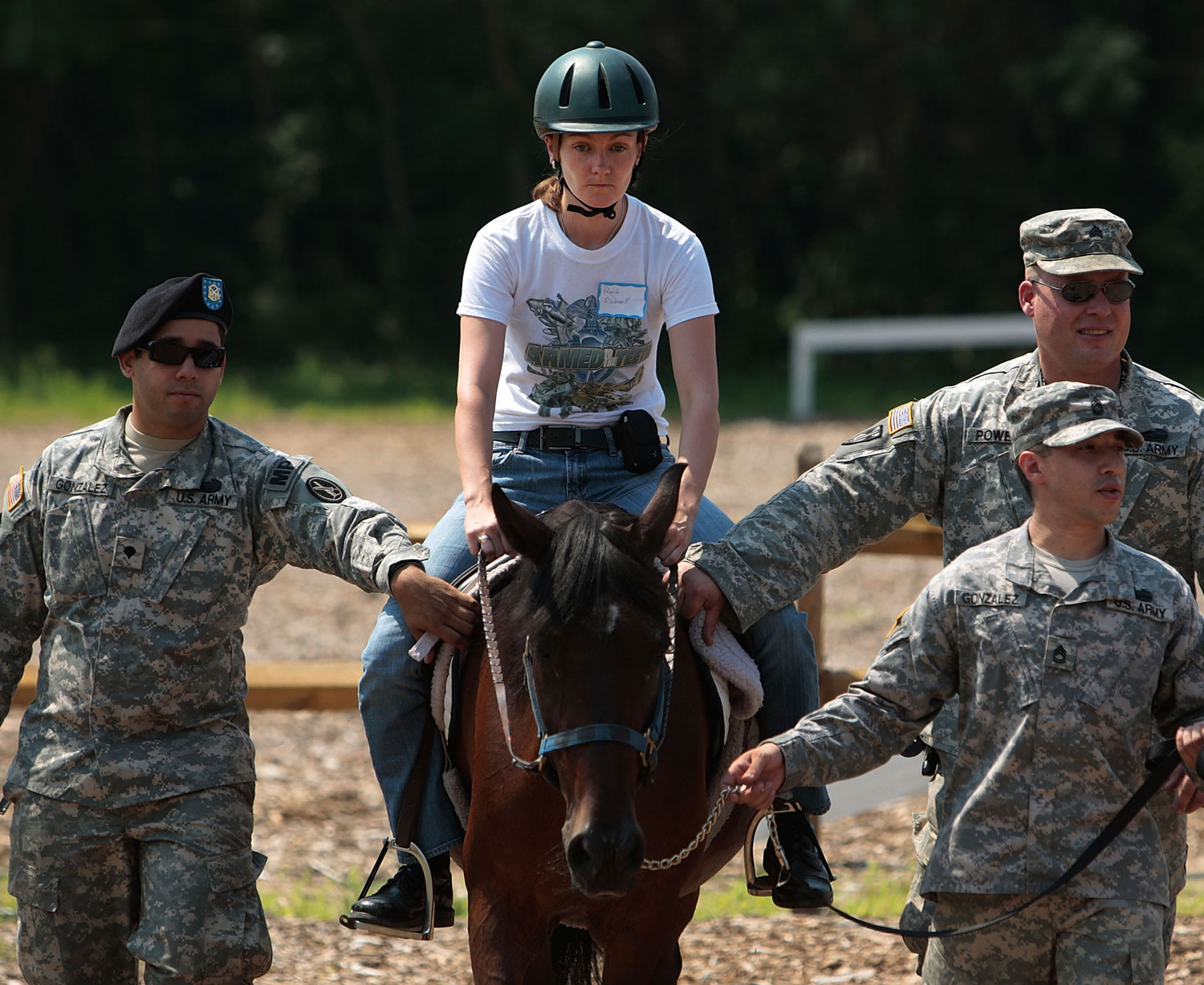
Military personnel—active duty and veterans alike—are among the fastest growing group of individuals turning to equine-assisted activities and therapies (EAAT). Programs specifically catering to veterans help them find peace, hope, joy and the many other sought-after positive moments that emerge through working with hoses, according to Meggan Hill-McQueeney, President/COO, Master Level PATH Instructor, BraveHearts. In 2019, BraveHearts served more than 1,000 veterans through 16,000 sessions.
“Horses are a lifeline for people for so many reasons and for people in so many scenarios,” she said. “Be a better horseman, become a better person, that’s the key.”
The benefits of using horses in veteran programs is that horses meet each participant where they are currently in life. Horses have survived in the wild because they are brilliant at reading intentions, and when used in EAAT sessions, the can help individuals build patience, courage and confidence.
“Horses see us all the way through to our souls,” she said.
At its core, EAAT for veterans is similar to offering therapeutic services to other populations. Safety, horsemanship and a desire to help others are key. However, Hill-McQeeney said that to successfully work with veterans, you must have a real depth of knowledge and horsemanship.
“Veterans want to get after it and have a real mission on their heart to serve,” she said. “They want to help horses and therefore want to become horsemen. They like to be challenged and want to be the best.”
Hill-McQueeney compared working with veterans to training a horse—it’s no part-time endeavor. Real progress emerges from an “all-in” approach. In her opinion, you have to either get in the round pen, go to the middle and start working or stay out of the pen altogether.
“You can’t be part way in and get that much progress,” she said. “In good times and bad, through fund raising, developing staff, upkeep of property and all the moving parts of programming, this kind of program takes constant nurturing every day of the year.”


